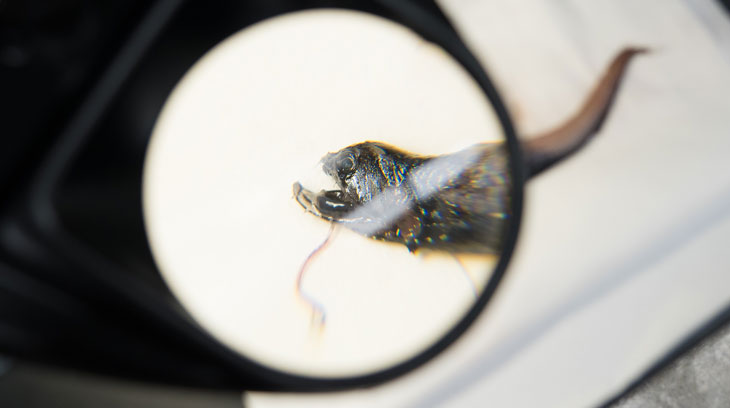In the deep sea, dragonfish lure smaller fish near their gaping jaws with beardlike attachments capped with a light. But the teeth of the pencil-sized predators don’t gleam in that glow.
Instead, dragonfish teeth are transparent and hard to see, thanks to nanoscale structures that reduce the amount of light scattered by the teeth, researchers report June 5 in Matter.
The clear daggers vanish into the animals’ dark mouths, probably to help dragonfish surprise their prey, says study coauthor Marc Meyers, a materials scientist at the University of California, San Diego. “They are mini-monsters of the ocean.”

Sign Up For the Latest from Science News
Headlines and summaries of the latest Science News articles, delivered to your inbox
The teeth of dragonfish are similar to those of most animals: They contain a dense outer layer of enamel-like material that coats a hard tissue called dentin. But nanostructures in both layers set these tiny chompers apart from others’ pearly whites.
Transmission electron microscopy of the teeth of one dragonfish species (Aristostomias scintillans) revealed tiny crystals, around 20 nanometers in size, in the enamel. In the dentin, the researchers found nanosized rods of the protein collagen coated with the mineral hydroxyapatite. If bigger, such structures would scatter light, but because of their small size, the light passes by with less being deflected, the scientists say. The teeth themselves are also very thin, which also helps transmit light.
Dragonfish aren’t the only creatures with transparent teeth, but this is the first study to look at how such teeth interact with light, Meyers says. The scientists captured the fish with a net from their ocean abode at a depth of around 500 meters.
 SIGHT UNSEEN The transparent teeth of deep-sea dragonfish (Aristostomias scintillans shown) probably evolved to help dragonfish surprise their prey. David Baillot/UC San Diego Jacobs School of Engineering
SIGHT UNSEEN The transparent teeth of deep-sea dragonfish (Aristostomias scintillans shown) probably evolved to help dragonfish surprise their prey. David Baillot/UC San Diego Jacobs School of Engineering

